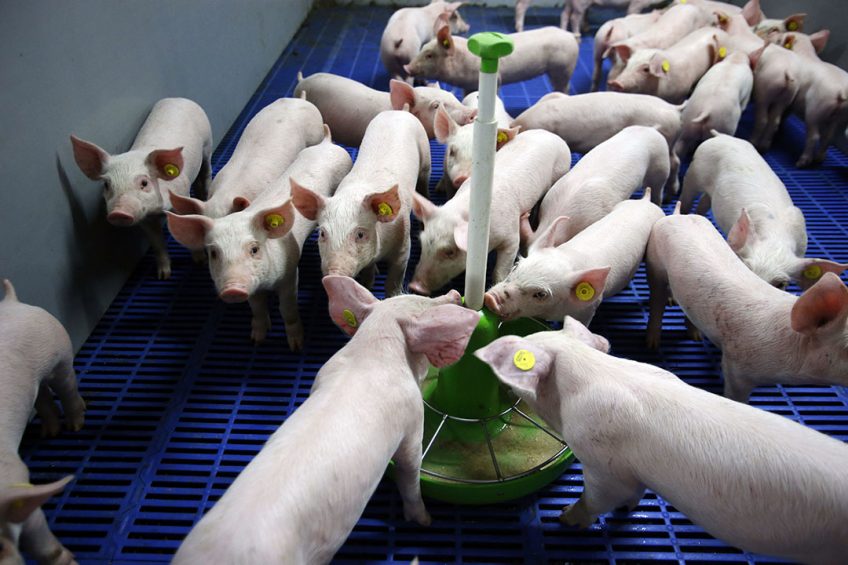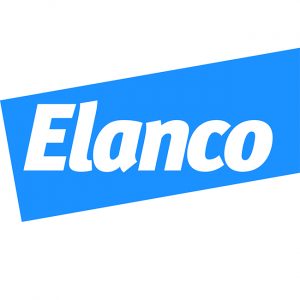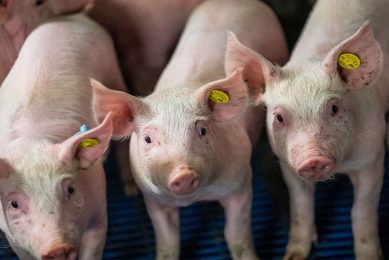EU’s zinc oxide ban: Preventing PWD with vaccination

The new EU regulations restricting the use of colistin and phasing out zinc oxide increase the need for pig producers to adopt alternative solutions for prevention of E. coli post-weaning diarrhoea (PWD). Enterotoxigenic E.coli (ETEC) is the most important pathotype responsible for PWD in piglets, which can result in significant economic losses due to mortality, decreased weight gain, cost for treatments, vaccinations and feed supplements.
Post-weaning ETEC strains mostly possess fimbriae F4 and F18, and produce one or more of the known following enterotoxins: heat stable enterotoxins STa, STb, the heat-labile enterotoxin LT and the Enteroaggregative E.coli heat stable enterotoxin (EAST1).
For many years the 2 main strategies for PWD control have been:
- the addition of zinc oxide in pig feed and
- the use of effective antibiotics, such as colistin.
The addition of zinc oxide at the levels of 2400–3000 ppm in pig feed demonstrated to reduce the incidence of PWD and mortality, improving growth performance in weaned pigs.
Impact of new EU regulations on the use of colistin
Colistin, has been widely used in swine both as curative treatment and for prevention of E.coli infections and PWD. Furthermore, this antibiotic is considered very important in humans and is used for the treatment of infections due to multidrug-resistant Gram-negative bacteria.
The recent discovery of the mcr-1 gene encoding for colistin resistance in Enterobacteriaceae, has raised great concern about the possible loss of colistin effectiveness for the treatment of multidrug-resistant Gram-negative bacteria infections in humans.
Stricter national targets
Several measures to reduce the use of colistin in animals have been reported in the “updated advice on the use of colistin products in animals within the European Union: development of resistance and possible impact on human and animal health”, published in July 2016 by the European Medicines Agency (EMA). The advice reported that by 2019-2020 all Member States should reduce the use of colistin in animals at least to a target level of 5 mg colistin/PCU.
Member States are also encouraged to set stricter national targets, ideally below 1 mg colistin/PCU. Reduction in the use of colistin should not be compensated by an increase in the use of other types of antibiotics, but should be achieved through other measures (improved herd management, biosecurity between production cycles, vaccination).
EMA added colistin to their Category 2 class of antibiotics, which includes medicines reserved for treating animal infections for which no effective alternative treatments exist. Consequently, the use of colistin in animal production should be considered as a last resort treatment.
Impact of new EU regulations on the use of zinc oxide
On 16 March 2017, EMA completed a review on the safety and effectiveness of veterinary medicinal products containing zinc oxide to be administered orally to food-producing species. The Agency’s Committee for Medicinal Products for Veterinary Use (CVMP) concluded that the overall benefit-risk balance for veterinary medicinal products containing zinc oxide to be administered orally to pigs is negative, as the benefits of zinc oxide for the prevention of diarrhoea in pigs do not outweigh the risks for the environment. As a result, the CVMP has recommended the refusal of the granting of the marketing authorisations and the withdrawal of the existing marketing authorisations for veterinary medicinal products containing zinc oxide .
On 26 June 2017, the European Commission adopted a decision to withdraw all marketing authorisations for veterinary medicinal products, listed in the Annex I of the decision, containing zinc oxide administered orally to food-producing species. The period of deferral must not exceed 5 years from 26 June 2017, thus the decision must be implemented no later than 26 June 2022.
Economic losses caused by PWD
PWD remains a disease that causes significant economic losses in pig production. Antibiotics have contributed significantly to mitigate the economic losses caused by PWD in swine. However, concerns about antibiotic resistance determined the restriction on the use of critically important antimicrobials (CIAs) in food-producing animals.
In particular, the reduction required for colistin limits the therapeutic choices for PWD treatment. In addition, the restriction on the use of zinc oxide will require a careful evaluation of the PWD preventive and control measures.
The benefits of vaccination
Vaccination is an effective approach to reduce the occurrence of ETEC PWD, reducing the infection pressure and increasing the immunity in the pig population. Several studies conducted in pigs confirm a reduction of antibiotic usage after vaccination.
A live vaccine against ETEC (F4 and F18) is available in Europe and other countries. This vaccine is added to the drinking water and is recommended for the vaccination of healthy weaned piglets of 18 days or more. Clinical studies confirm that the administration of this vaccine significantly reduces intestinal colonisation by virulent ETEC, protecting piglets challenged with ETEC F4 and F18.
A promising control strategy
Vaccination is one of the most promising strategies for the control of PWD in pigs, both in terms of preventive efficacy and cost-effectiveness, but it should be supported by other control measures. Among these measures, the control of production parameters (temperature, ventilation, density, sanitation, improvement of feed quality) and the improvement of welfare and biosecurity are crucial factors for PWD control and for the reduction of antibiotic use during the post-weaning period.
With new EU regulations restricting the use of colistin and phasing out zinc oxide pending it is important that producers and veterinarians now begin to transition from these antimicrobials to other more sustainable approaches to PWD prevention. This will allow adequate time to properly adjust the use on each farm for optimal results.
References available on request
Author: Andrea Luppi, Istituto Zooprofilattico Sperimentale della Lombardia e dell’Emilia Romagna, Laboratory of Parma, Italy



